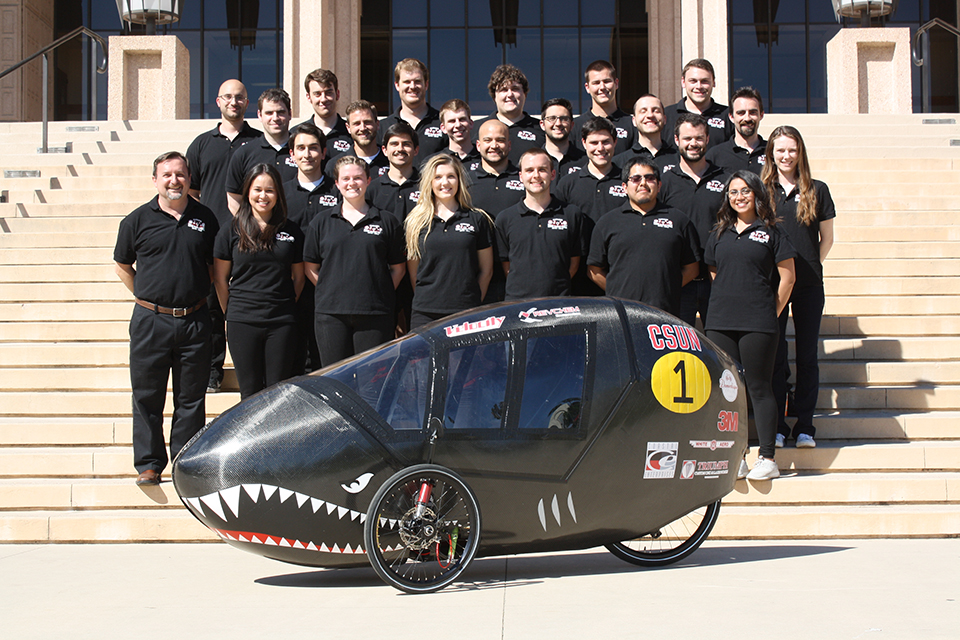CSUN Engineering Students Win Back-to-Back ASME Human Powered Vehicle Challenges
California State University, Northridge mechanical engineering students came in first overall at the 2017 American Society of Mechanical Engineers’ (ASME) Human Powered Vehicle Challenge in Las Vegas.
More than 500 students came together in March at the University of Nevada, Las Vegas for E-Fest West. The first of two engineering festivals scheduled in the U.S. this spring, E-Fest West is one of ASME’s regional events built around design, advanced manufacturing and robotics technologies.
CSUN engineering students competed in the Human Powered Vehicle Challenge (HPVC). Each team in the HPVC presented an originally designed human-powered vehicle that was judged for design, workmanship and innovation.
The CSUN team of 23 students took home first place overall for the second year in a row. The team also placed first in the categories of design and innovation, making this the third consecutive year the team has placed first in innovation.
The CSUN vehicle, called The Deadliest Khach, has been in the works for the past year as part of a two-semester senior design class. The team spent the first semester researching and designing the vehicle and the second semester building and testing it.
Not anyone can join the CSUN Human Powered Vehicle Team. Professor and faculty advisor Aram Khachatourians — after whom the vehicle is named — said the senior design class is competitive because he wants students who have the right attitude.
“The team is made up of folks with great attitudes,” Khachatourians said. “I’m not saying grades aren’t important, but if you get a group of people together who are fun, who love to raise the bar and just want to perform, then we are producing good engineers.”
Khachatourians pointed out that while this team is unique because of the selection process students go through, there is another reason the team has been successful.
“What’s different, and I think part of why we do so well, is that we leave enough time at the end for testing,” Khachatourians said. “We finish about three weeks early and we do a lot of testing here on campus. If anything is going to break, we’d rather have it break here and have enough time to fix it.”
Helen Mills, a senior majoring in mechanical engineering, spearheaded this project as the chief project engineer.
“I was responsible for delegating to the five sub-team leads,” Mills said. “I worked on the project right there with everyone else, building, working on reports and doing anything else that the team needed.”
Mills credits the success of CSUN’s HPV team to the fact that every member had a sense of accountability.
“Everyone had ownership of the project. We all felt a certain amount of responsibility toward the team,” Mills said. “Everybody owned the team and everybody wanted to see the team succeed. Everybody went above and beyond.”


 experience
experience